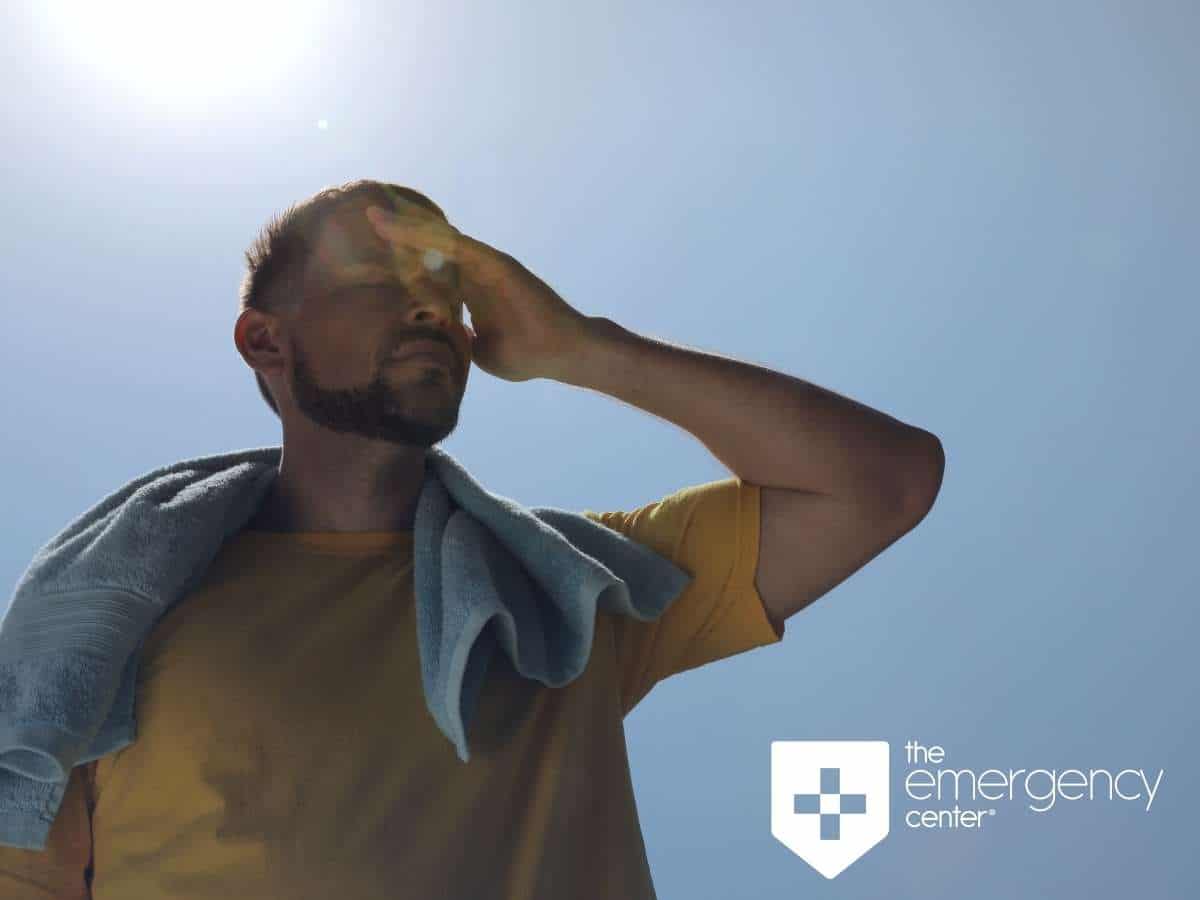Am I Dealing With Heat Exhaustion Or Heat Stroke?
Heat Exhaustion Vs. Heat Stroke: Differences & How To Avoid Them
Summer in Texas is no joke. The heat and humidity can be overwhelming, and if you’re not careful, it can lead to heat exhaustion or even heat stroke. So how do you know the difference between the two, and how can you avoid them? Let’s take a look.
The season of the sun has long been associated with outdoor recreational activities like camping, gardening, days at the lake, and baseball and softball. Thanks to the impact of the global pandemic, even more people will likely be spending more time outside. Being aware of the signs of heat illness and knowing what to do about it will help keep you and your loved ones safe.

Aspects To Consider To Prevent Heat Exhaustion & Stroke
As temperatures tick up, anyone can be at risk for heat exhaustion or heat stroke. However, there are common factors that make these health issues more likely to occur:
High Heat Index
A weather reading combines temperature and humidity to more accurately reflect how it feels outside.
Dehydration
This occurs when the body loses too much water often through sweating.
Tough physical activity
Running, hiking, strenuous yard work or just about any kind of sport can quickly contribute to overheating.
Improper clothing
Overdressing (often to protect skin from the sun) or wearing tight-fitting clothes can prevent the body from properly cooling itself off.
Sudden temperature change
The body needs time to adjust to hotter temperatures.
In addition, age, obesity and other chronic medical conditions, a previous history of heat-related illness and certain medications also can increase the risk of these medical issues.
To help minimize risk, take frequent breaks in an air-conditioned place during the hottest parts of the day, wear loose-fitting clothes and sunscreen (sunburn can keep the body from cooling itself), and don’t stay out in the heat too long if you are not used to it. Also, drink plenty of water or sports drinks—alcohol and certain caffeinated beverages can actually increase dehydration and make heat-related illnesses worse.
Heat Exhaustion: Recognize & React
If you or someone you’re with begins experiencing any of the signs of heat exhaustion, it’s time to take action. Left unchecked, it can lead to a much more serious heat stroke.
Common Symptoms Of Heat Exhaustion
- Muscle cramps
- Feeling faint and dizzy
- Excessive sweating
- Rapid, weak pulse
- Nausea and vomiting
To treat heat exhaustion, find an air-conditioned place to rest, drink plenty of fluids and apply ice towels. If symptoms do not improve within an hour, it’s time to seek medical care.
Heat Stroke: Recognize & React
Heat stroke is the most severe form of heat-related illness and requires immediate medical attention. If it is not quickly addressed at an emergency center, it can cause permanent injury or even death.
While heat exhaustion may lead to heat stroke, the symptoms are not entirely the same.
Common Symptoms of Heat Stroke
- Throbbing headache
- No sweating
- Rapid, strong pulse
- Red hot, dry skin
- Loss of consciousness
- Nausea or vomiting
If you believe someone is having a heat stroke, immediately call 911 or take the person to The Emergency Center for care. Any delay in care can be fatal.
Stay Safe In The Sun & Avoid Dangerous Heat Illnesses
Enjoying the great outdoors is part of what makes summer so fun. But fun starts with staying safe, which means knowing how to head off and handle potentially dangerous heat illnesses. Enjoy life. We’ll be here for the bumps along the way.

The Emergency Center
San Antonio
11320 Alamo Ranch Pkwy
San Antonio, TX 78253
Phone: 210-485-3644
Conroe
4019 I-45 N,
Conroe, Texas 77304
Phone: 936-247-9457
